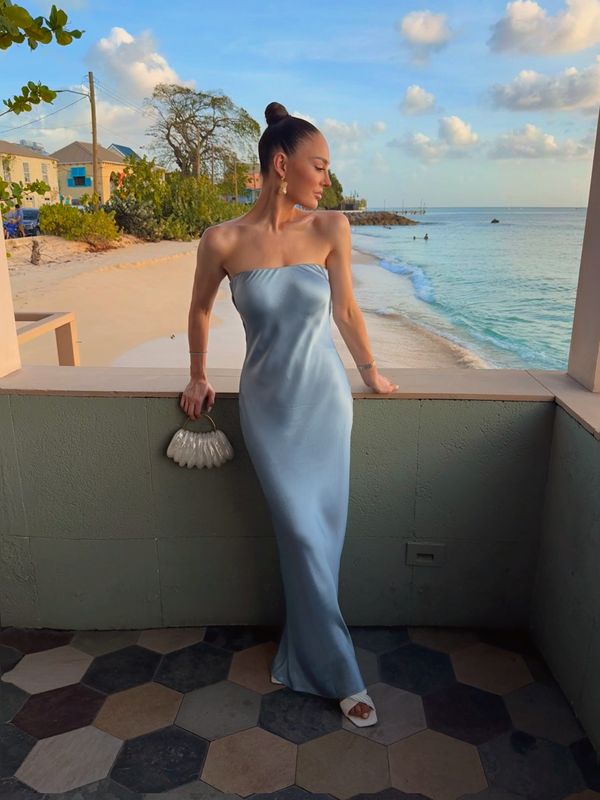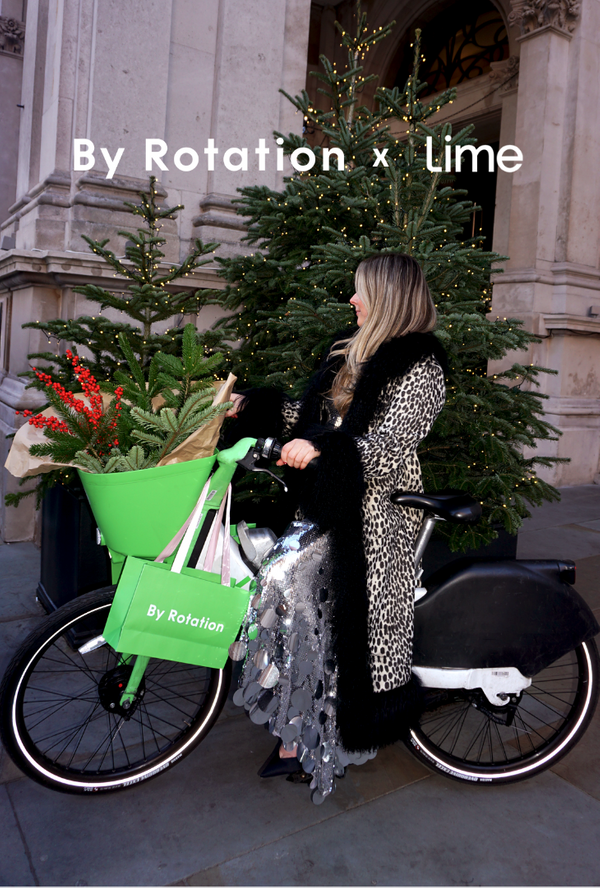Indian weddings will often have multiple events across a few days, and each will have its own dress code. So we understand this might be overwhelming, who better to guide us on what to wear than our Founder & CEO, Eshita Kabra.
Having recently headed back to Rajasthan for the first time since By Rotation’s inception for her brother’s wedding, find out her advice for your first Indian wedding as seen in Who What Wear.
Read on to find out what to wear to an Indian wedding.

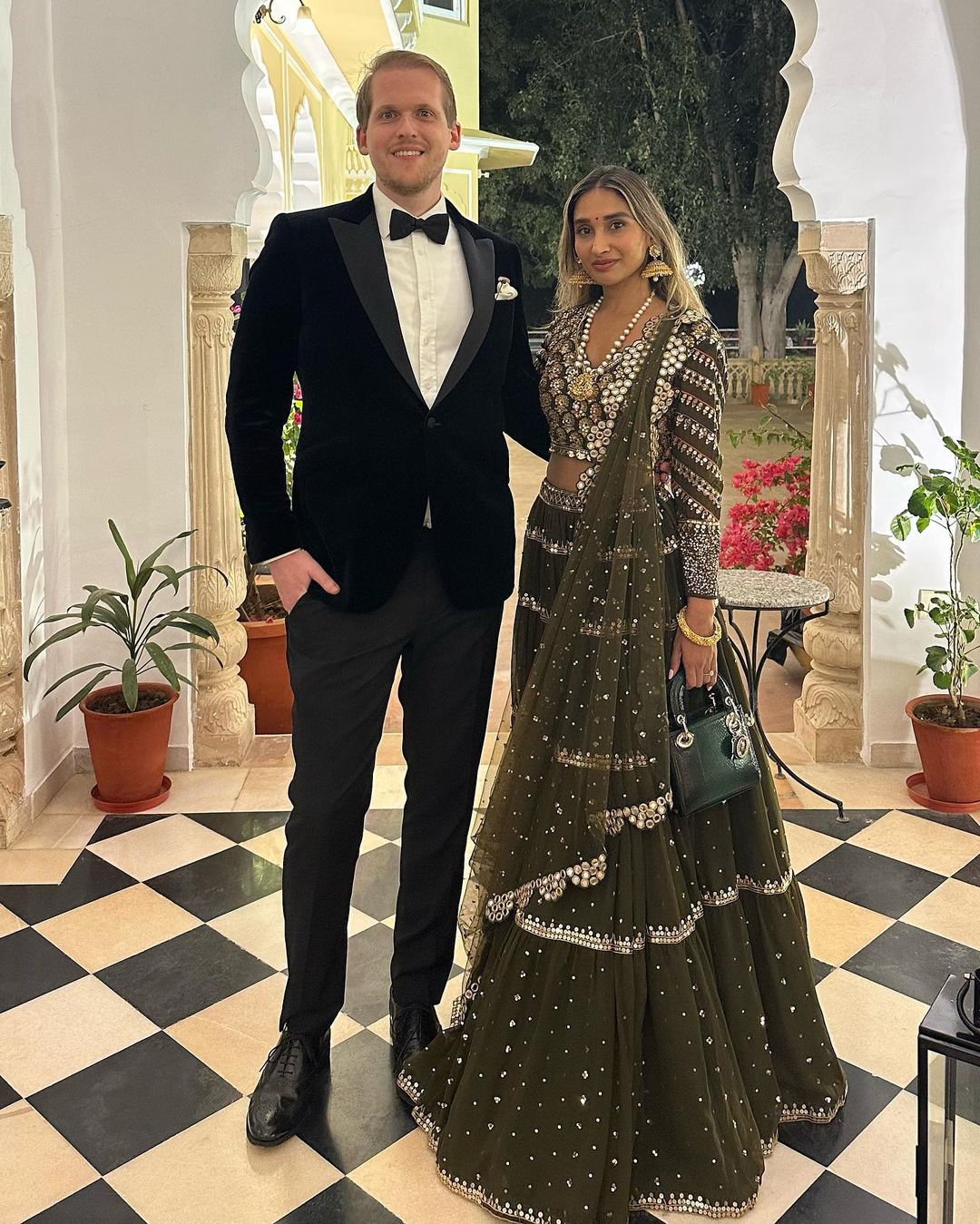
How can you balance tradition with modernity?
I love mixing up Indian looks with a western take to create something unique but also appropriate for the festivities.

Would you be expected to wear multiple outfits?
An Indian wedding will often have multiple events that come with different dress codes. Hindu weddings in particular have religious ceremonies and meanings attached to each event.
Below are examples of typical events to expect when you are invited to a Hindu Indian wedding, in chronological order:
Cocktail Night: Often a black tie event, the wedding celebrations will kick off with a party where the couple can let loose and enjoy a glamorous evening with their family and friends before the serious religious festivities get underway.
Mehendi: This is the ceremony where the bride, her family and guests will have their Mehendi (or Henna) done. Traditionally, the groom’s side would not be involved in this and do their own Mehendi at home, but this has now become the official opening wedding event. As the event is usually held in day time, bright colours—often with a dress code referring to green (like the colour of Mehendi) might be suggested. You should dress in an Indian outfit if possible.
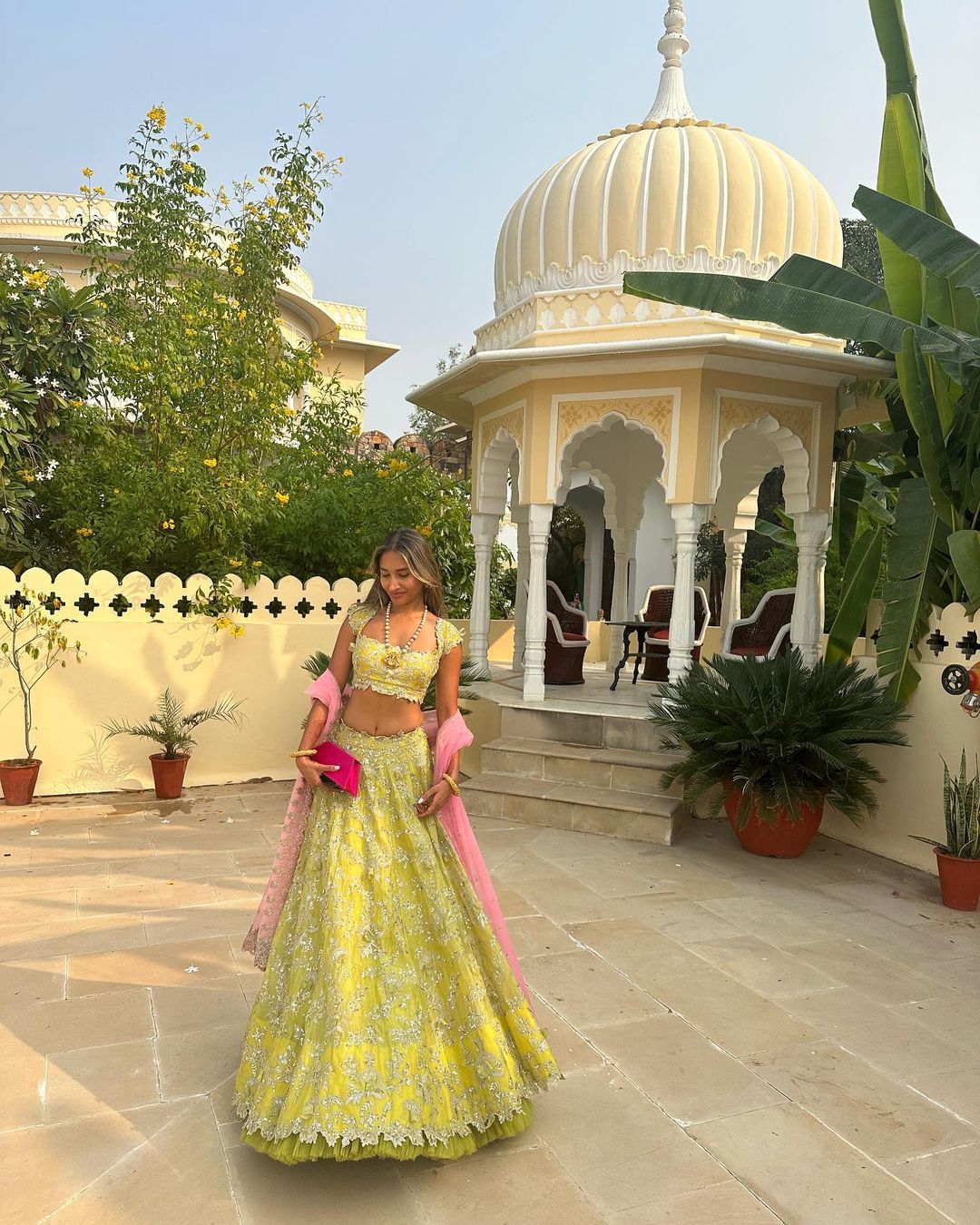

Sangeet: This is usually held in the evening and is a dance-off with stage performances from the bride’s and the groom’s side. Traditionally, this is the evening when the couple would get engaged in front of all their guests, ahead of getting married the next day. Guests would often be instructed to wear sparkly outfits—I personally think you can get away with wearing an evening gown if you don’t want to wear another Indian outfit. Men can wear suits and tuxedos.
Haldi: This is probably my favourite of the religious ceremonies in a Hindu wedding. As a purifying ceremony for the bride and the groom, it can be deeply emotional for people close to the couple. Held during the day, I would recommend dressing in light-coloured clothing. It doesn’t need to be Indian per se, but if you do choose to wear western silhouettes, please do keep them modest. Often the theme will suggest colours in the shades of yellow and orange, as “haldi” translates to “turmeric” in Hindi.
Phere: This is the final event of the wedding festivities and is the religious ceremony where the couple will take their wedding vows and be married by a priest. Traditionally, the bride will wear red—in no circumstance should any guest (male or female) wear red. Women will be expected to dress in Indian outfits—I would recommend either a saree (a stretch of fabric arranged over the body as a robe, with one end attached to the waist, while the other end rests over one shoulder as a stole) or lehenga (a form of ankle-length skirt). Men can wear suits and will be given a Safa (a hat made out of a long colourful scarf) to wear.
How can you accessorise your outfit?
I’d recommend small handbags paired with Indian-styled jewellery pieces where possible. For shoes, as you will most likely be walking and dancing a lot, I would suggest to wear wedges under your lehengas.
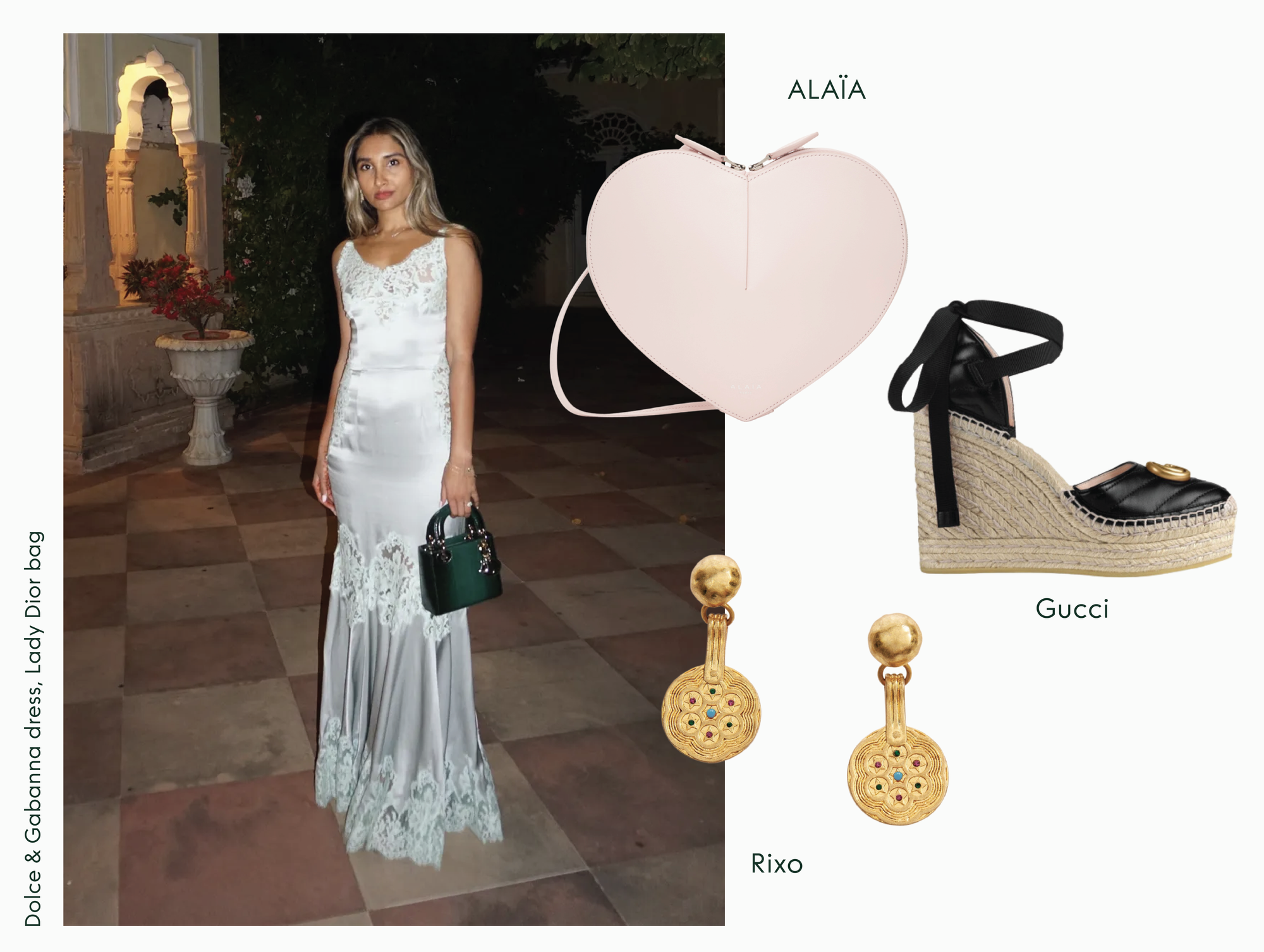
What colours should you consider?
"In terms of colour per celebration, my failsafes are shades of green for Mehendi and yellows and oranges for Haldi. Especially for Phere, say it with me—avoid red, white and black."


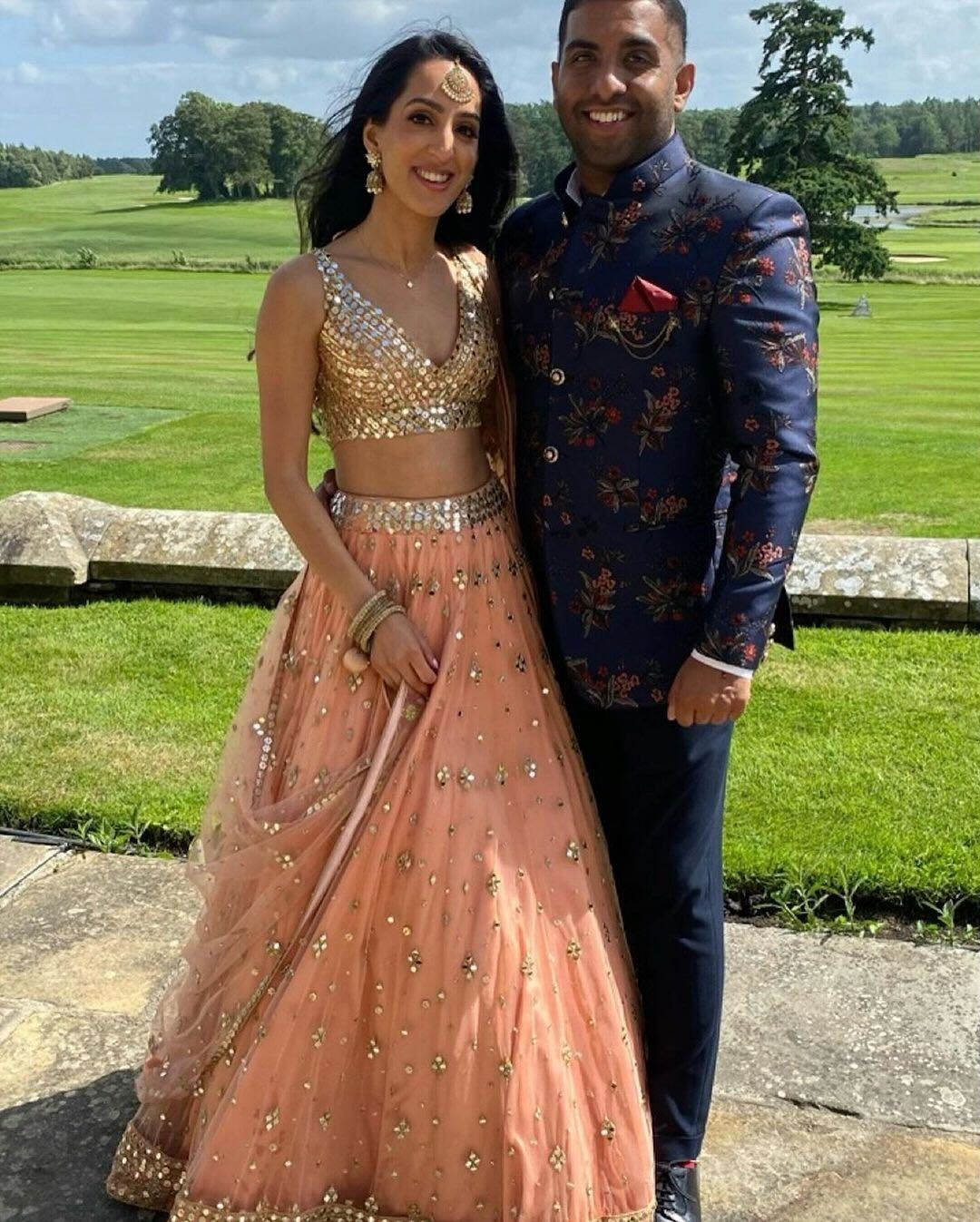
Head to the By Rotation app to rent Indian Wedding Guest Dresses.




